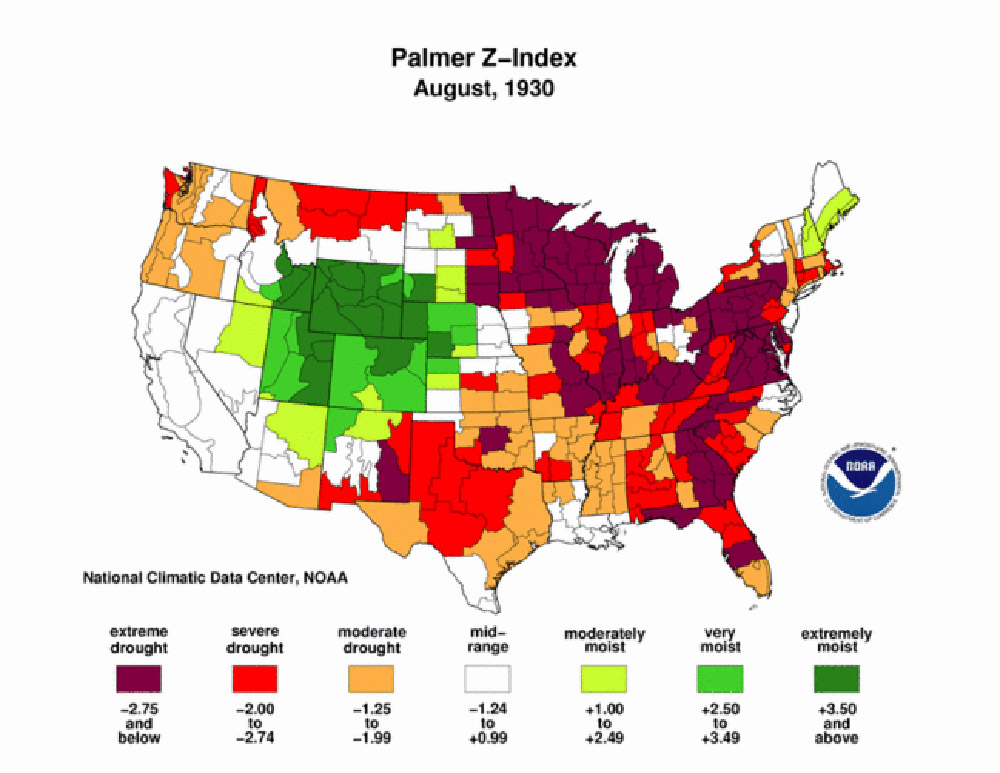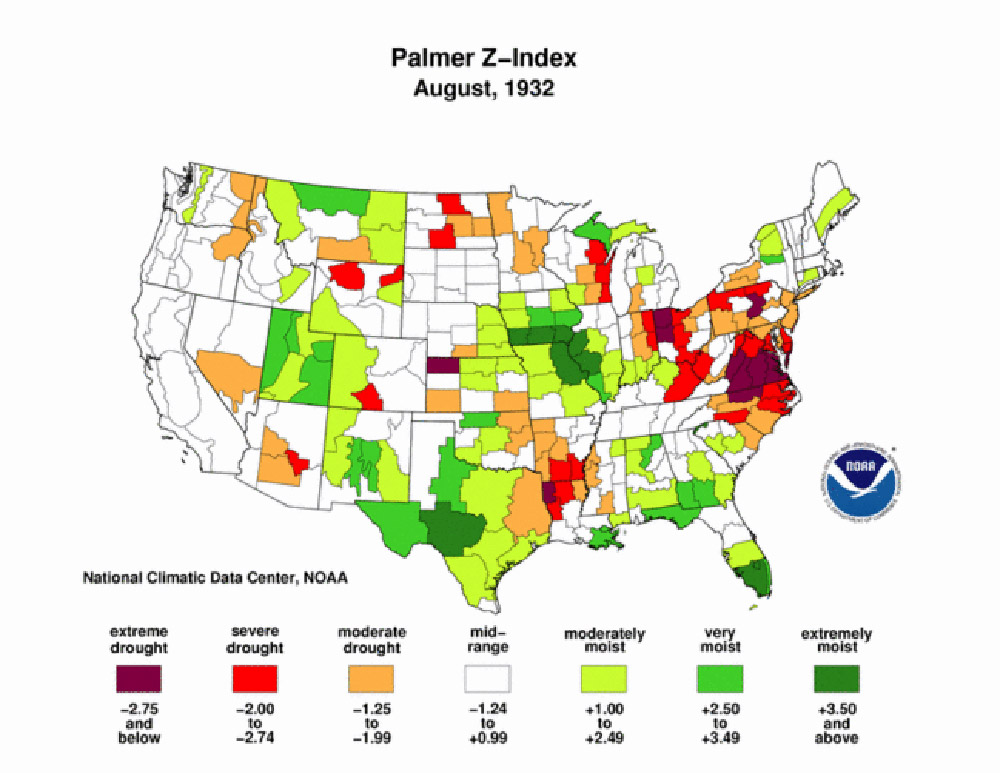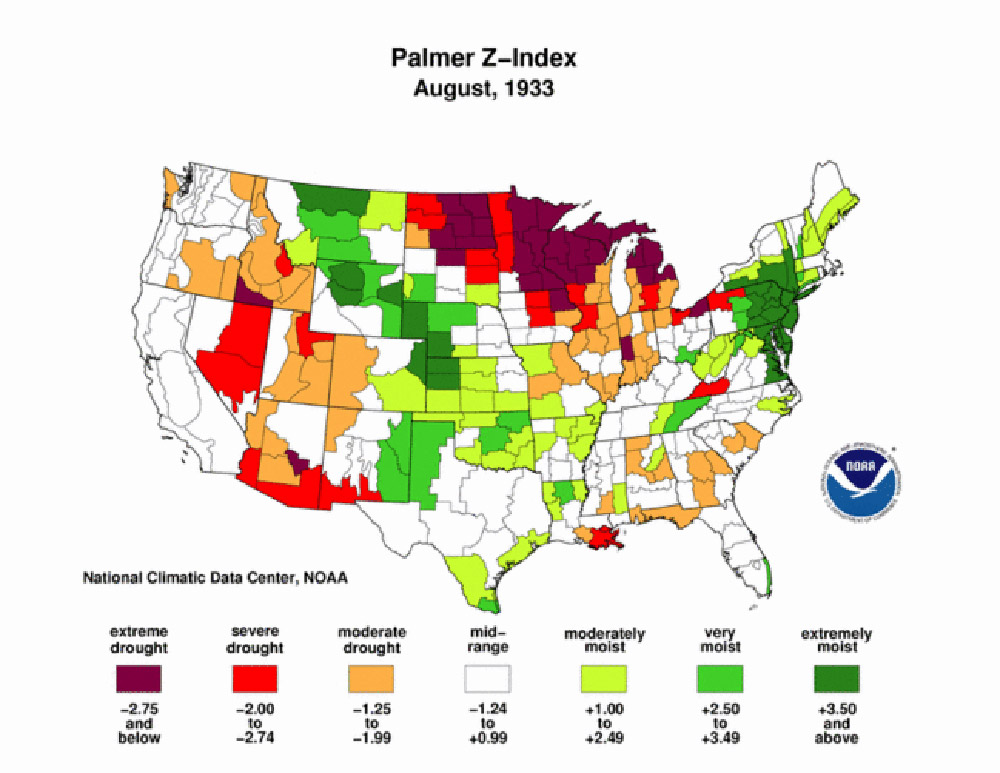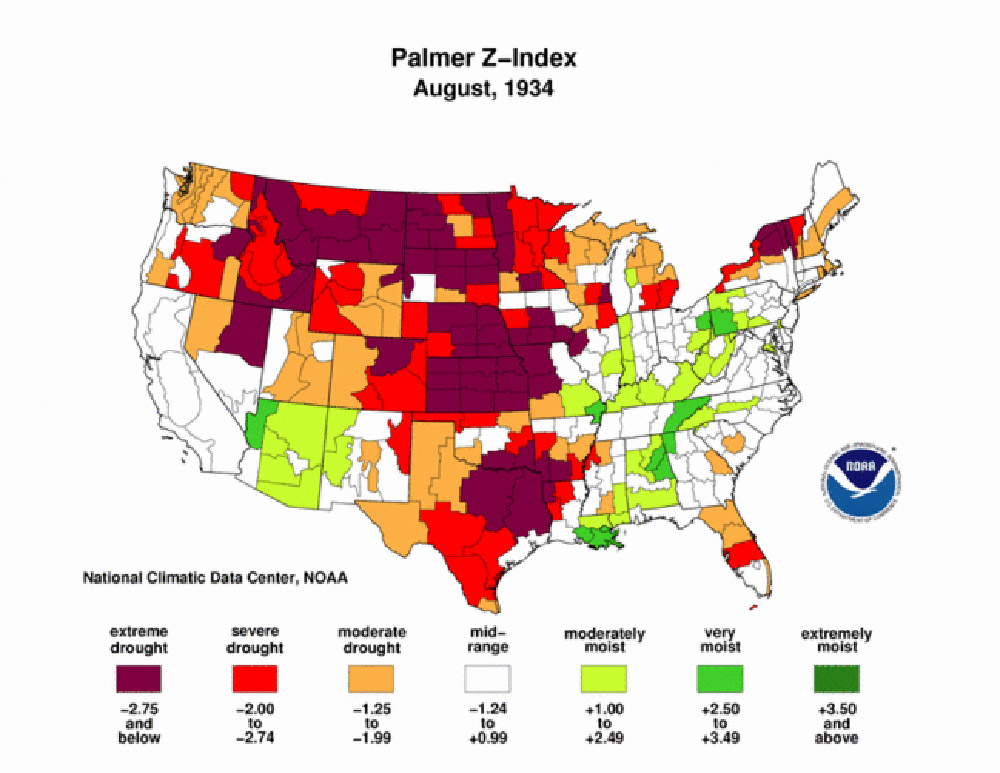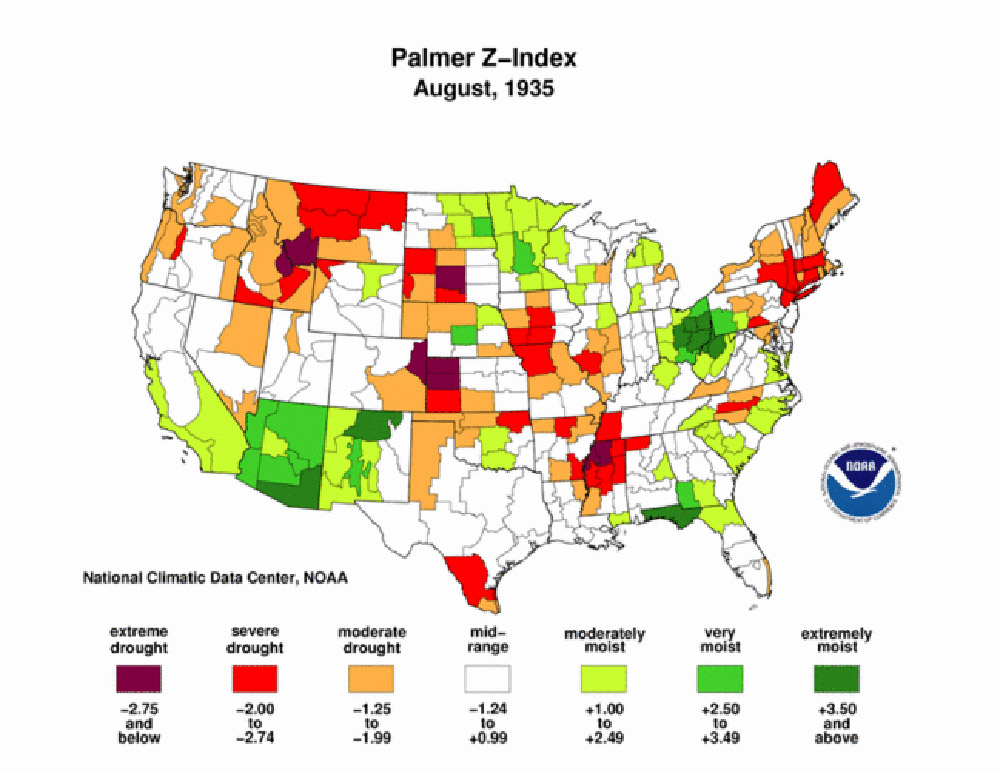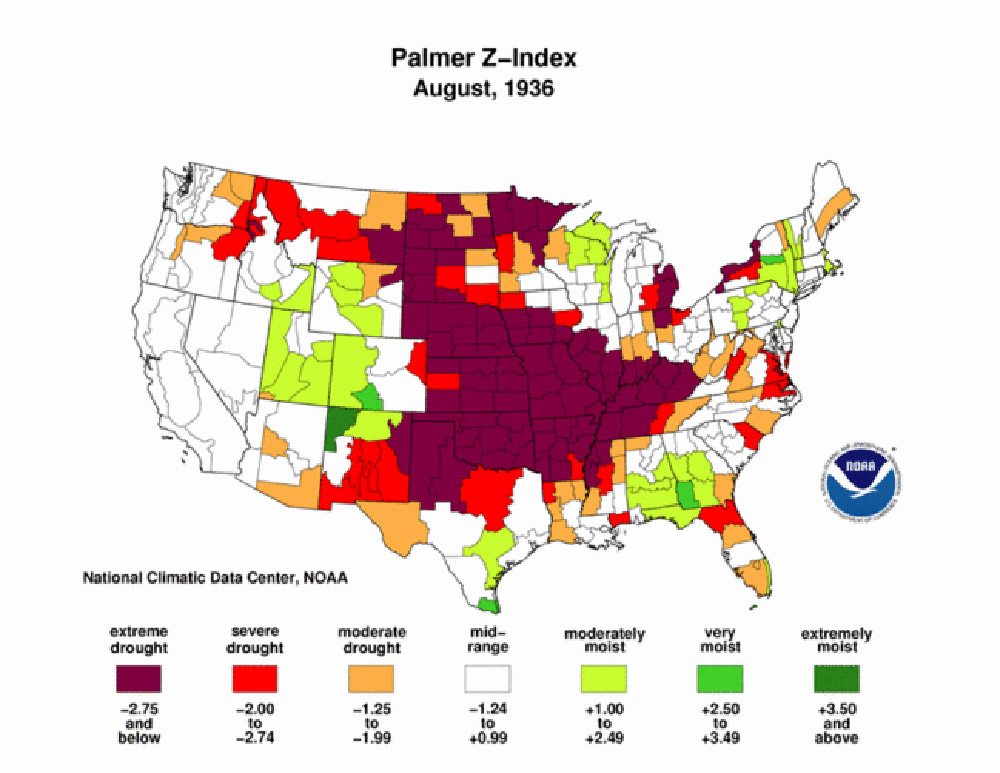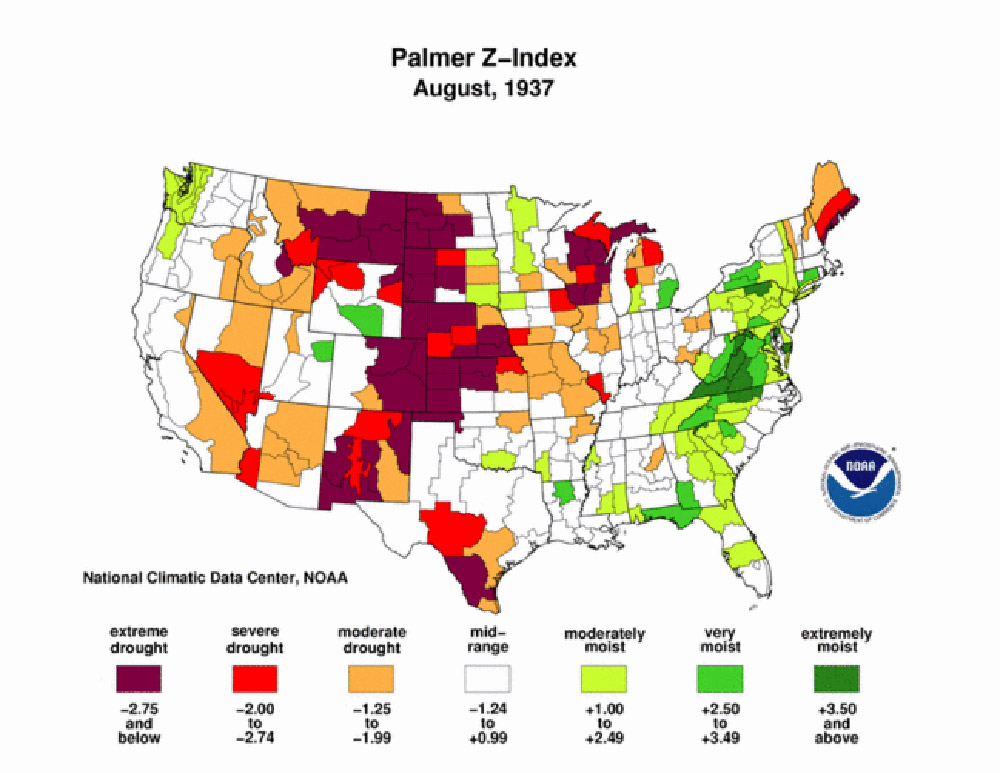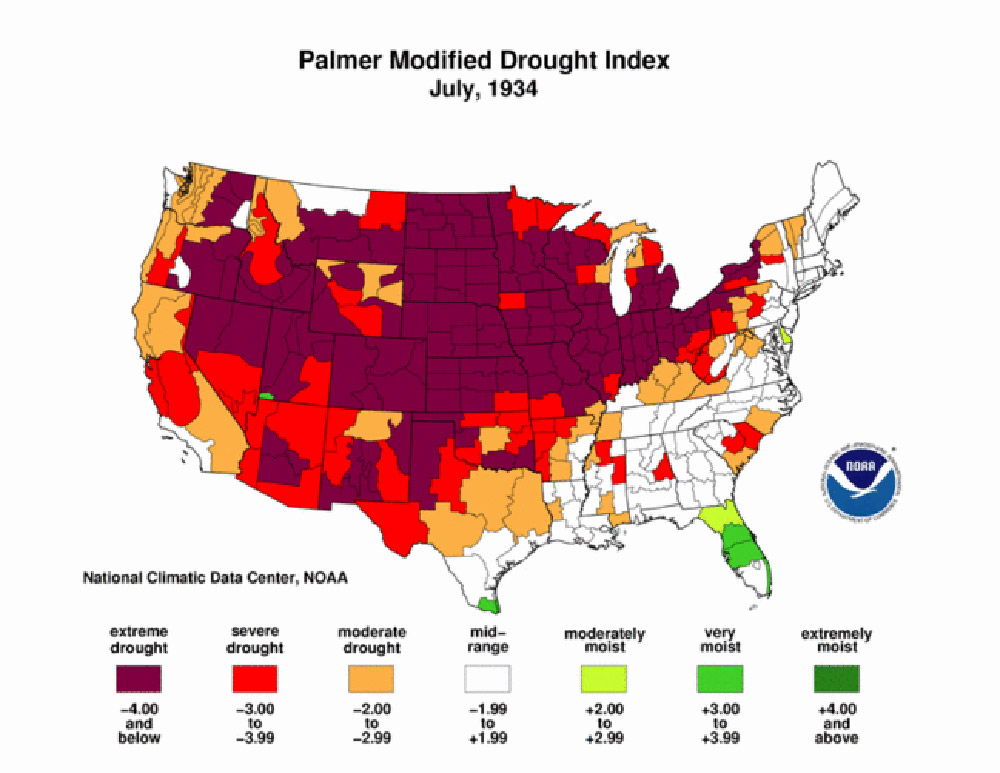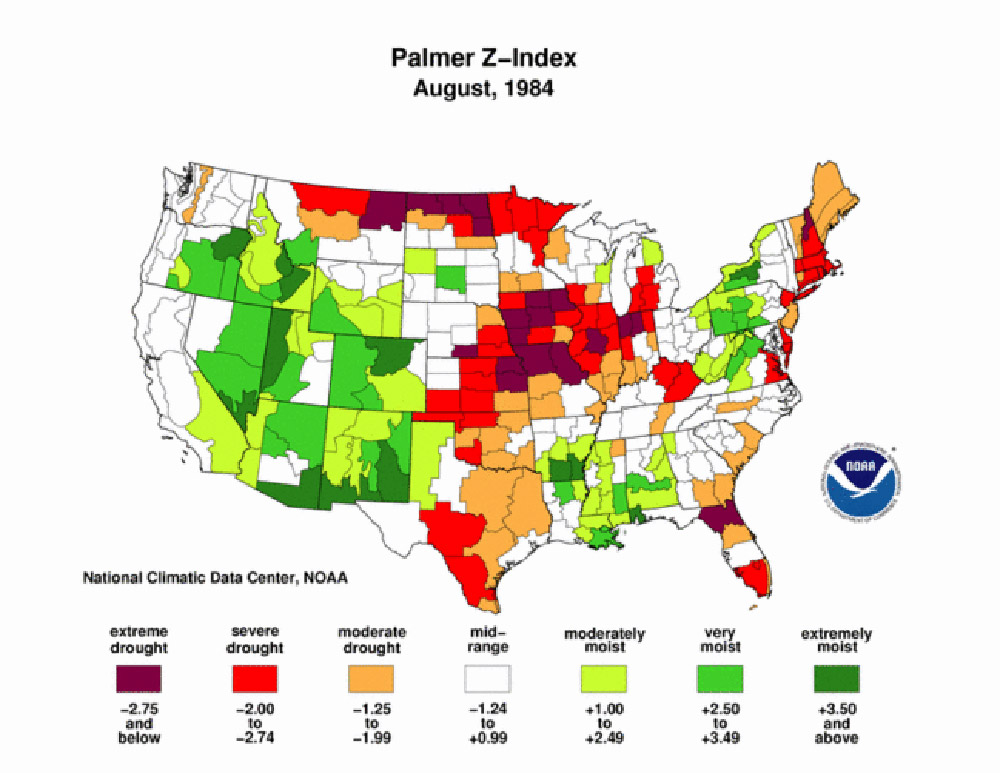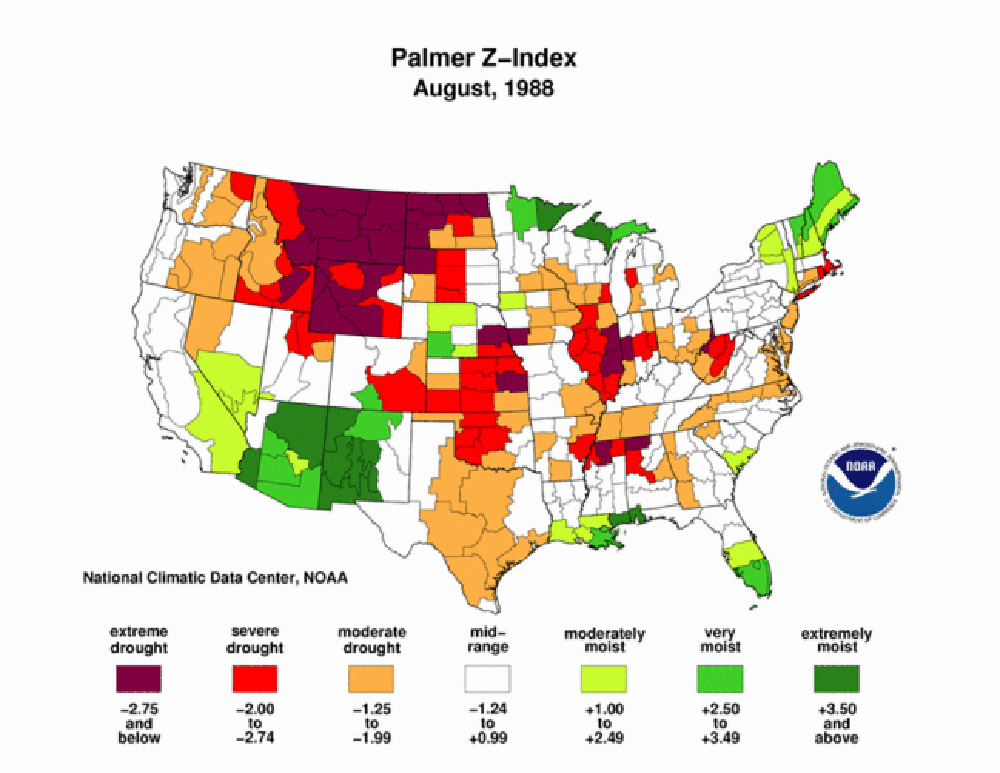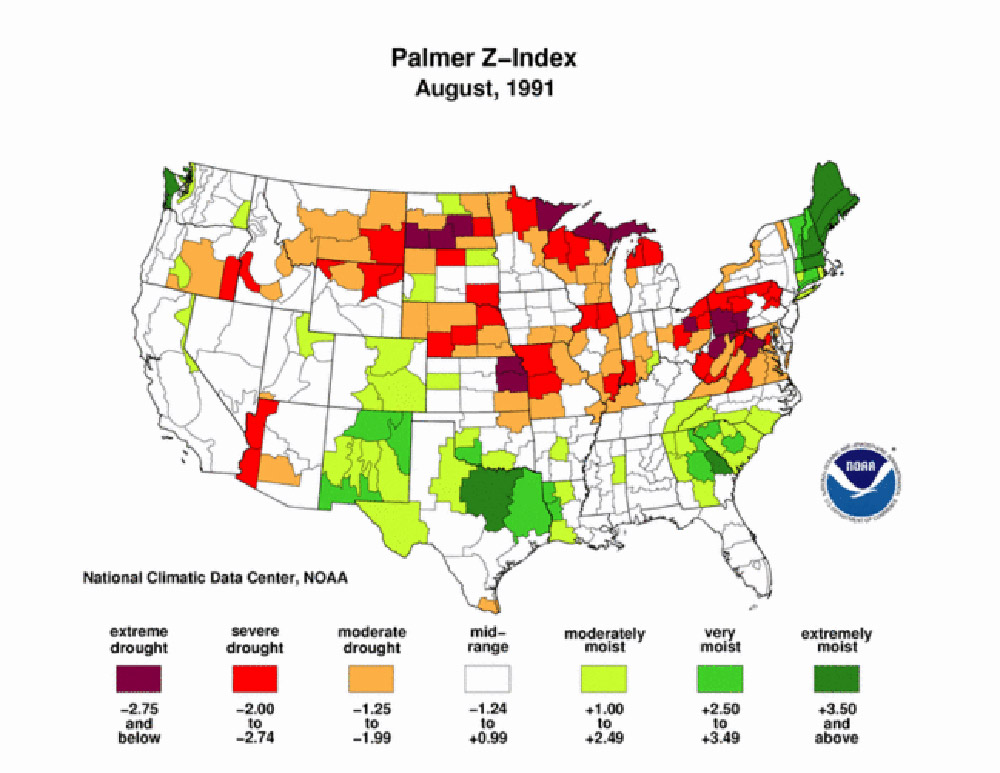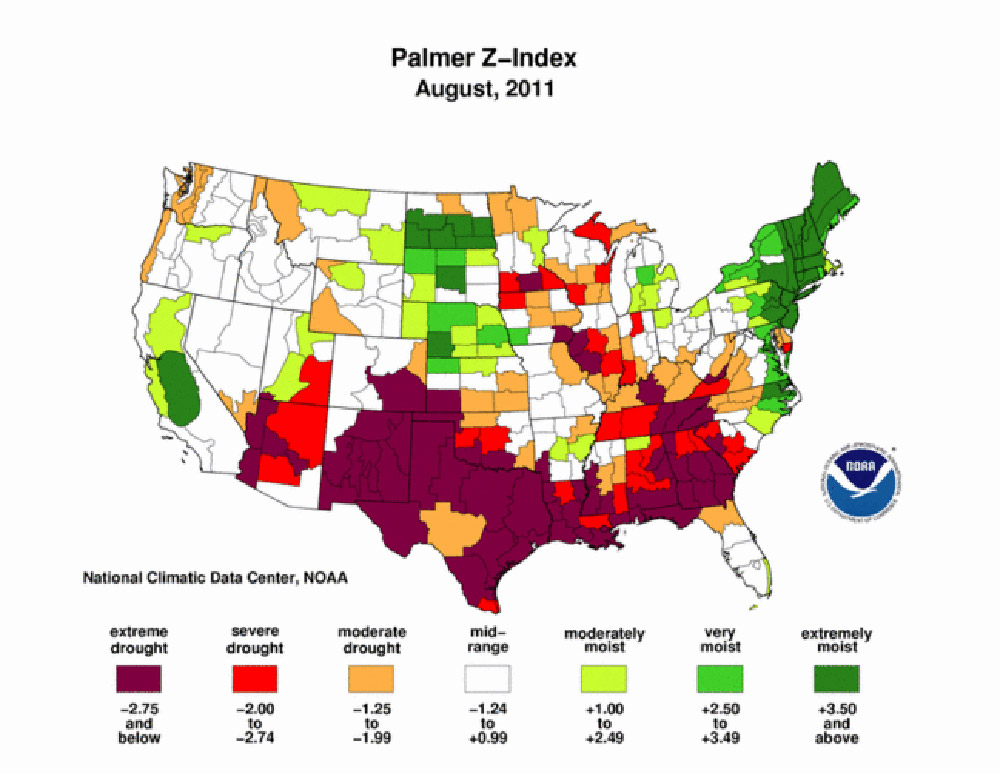North Dakota is a semi-arid state. This means that the weather is neither consistently desert-like (arid), nor humid. But, in any given year, the weather may be desert-like or very wet. The weather in our state is likely to be extreme in one direction or the other.
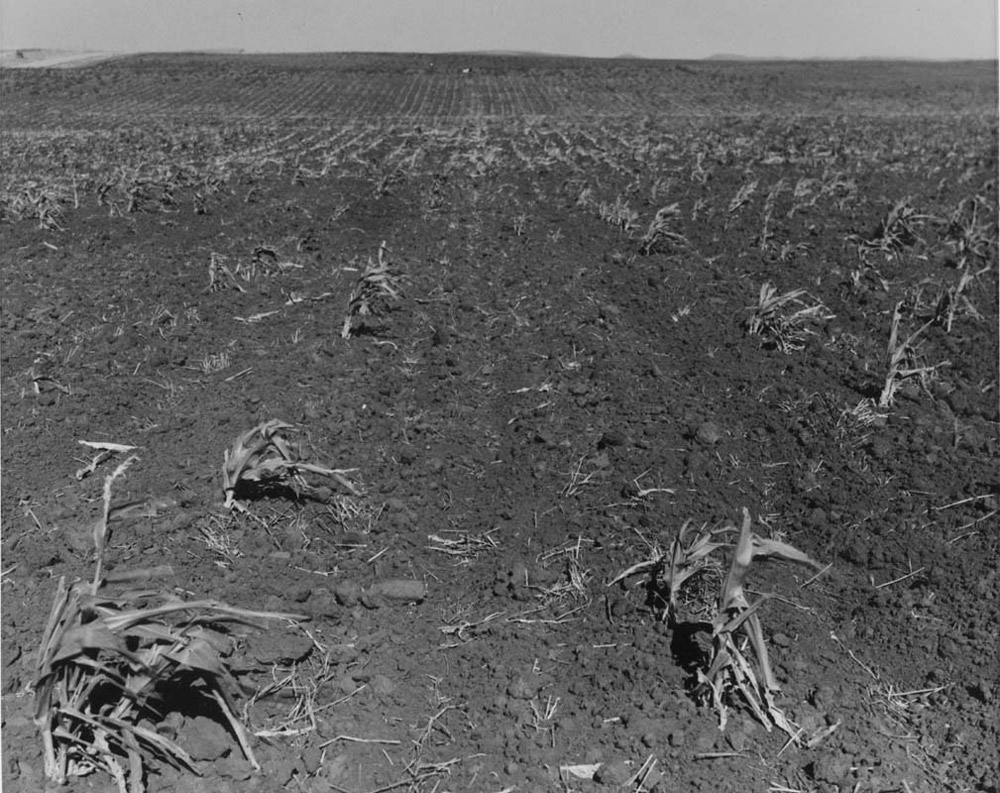
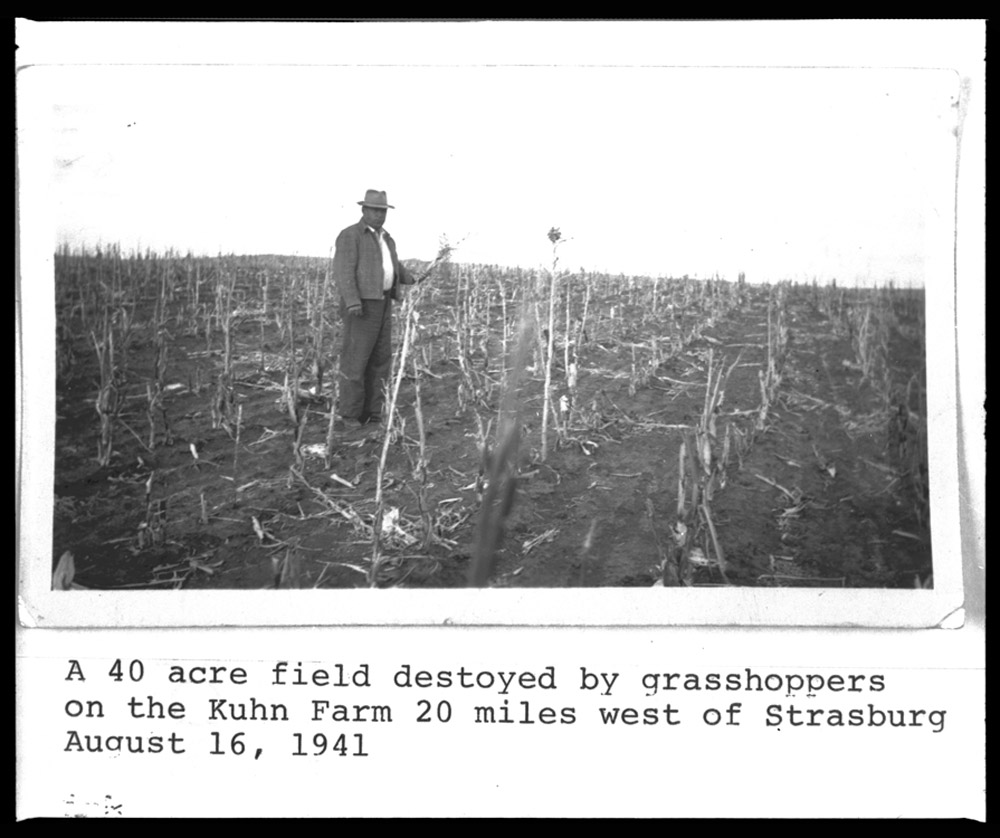
,-July-1934-optimized.jpg)
-June-1934-optimized.jpg)
During the mid-1930s, drought combined with heat to kill farm crops and leave livestock with little to eat. (See Image 4.) In 1936, North Dakota recorded both its record highest temperature and its record lowest temperature. Steele recorded a high temperature of 121° F on July 6, 1936. It was 114°F in Bismarck the same day. (See Maps 1-8.) However, just five months earlier, on February 15, 1936, the thermometer read -60°F in Parshall. That gives North Dakota a temperature spread of 181 degrees. (See Image 5.) Only two other states have more extreme temperatures: Montana (187 degrees) and Utah (186 degrees).
Of course, the 1930s were not the only drought years in North Dakota. Because our climate is semi-arid, drought can be expected at any time. (See Maps 9-12.) Drought might strike one part of the state, but not another. This is a constant problem for farmers. (See Image 6.) When you see stacks of hay bales in a farm yard, they represent the farmers’ protection against a hay-destroying drought. No-tillNo-till refers to an agricultural practice in which farmers do not till the soil after harvest or before planting. Farmers use equipment that drills the seed into the ground without disturbing the soil surface. In this way, the moisture that is stored in the sub-surface soil layers cannot easily evaporate. Tillage not only allows moisture to escape, it destroys the physical structure of the soil. No-till helps to preserve or restore the best qualities of the soil. farming practices help to conserve soil moisture which is another protection against drought.
The effects of a string of dry, hot summers cannot be overcome by a single wetter than usual year. In 1935, North Dakota farmers had more rain than usual, but the rainfall did not end the drought that lasted until the end of the decade. Nor do the effects of long-term drought yield to irrigation or conservation practices. After years of below-normal rain or snowfall, the moisture in the lower levels of the soil becomes depleted. Seeds may not sprout. (See Image 7.) Exposed topsoil blows away in the wind. Prairie fires can start easily in dry brush and burn until they run out of fuel.
The maps included here are from the National Oceanic and Atmospheric Administration (NOAA) website. They were developed with a tool called the Palmer Drought Severity Index.
Why is this important? Drought is a recurring climatological problem in North Dakota. We can’t change the climate, but we can prepare for it and understand the impact of drought on agriculture. Drought combined with heat can affect both soil moisture and surface water resources (such as lakes and rivers). Because we live in a semi-arid state, it is important to practice water conservation in both agriculture and in daily life.



